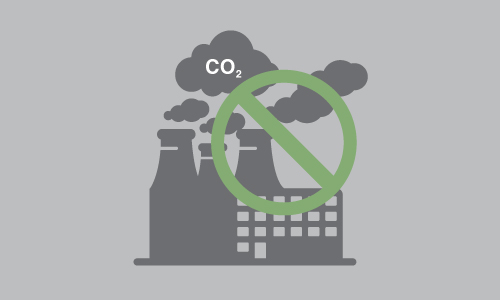It’s no secret that air pollution is extremely dangerous for both the general public and the environment. This is one of the reasons why the Clean Air Act of 1970 was established in the first place – to help improve public health while reducing the impact humans have on the natural world.
Although the air pollution levels have dramatically decreased over the last 45 years, airborne contamination is still a major issue. Industrial facilities need to abide by regulation set by the Environmental Protection Agency (EPA) when it comes to pollution emissions and their abatement mechanisms.
In this article, we’ll discuss the definition of air pollution, go over the present challenges that airborne contaminants bring, and take a look at potential issues that may materialize in the future.
Defining Air Pollution
In the broad sense, air pollution is defined as the introduction of poisonous or otherwise harmful substances into the air. These substances can range from toxic chemicals to biological compounds, but they all pose a risk to human health and the environment in one way or another.
As you can imagine, pollution reduces overall air quality, which may have serious, adverse effects on both humans and animals alike. High air pollution concentration may result in eye irritation, skin rashes, respiratory complications, heart disease, and even premature death in humans. Animals can show similar symptoms with more severe signs, especially if one of their food sources is directly contaminated.
Challenges We Face Today
Even if organizations like the EPA are working to reduce pollution, we need to identify all major sources of contamination in order to identify an effective solution. Huge amounts of contaminants such as volatile organic compounds (VOCs) and other hazardous air pollutants (HAPs) come from industrial facilities.
Local and international authorities need to implement and enforce stricter HAP and VOC abatement standards to help reduce air pollution that comes from industrial settings. In addition to this, the four major air pollution abatement challenges that the EPA has identified are:
Achieving High Health Standards for Common Air Pollutants
Despite the fact that air quality is considerably better than in the past, there are still areas in the country and around the world that have unhealthy pollution levels. The areas that still suffer from excessive contamination need to be prioritized in order to achieve high health standards relating to common air contaminants.
Limiting the Effect on Global Climate
There’s no denying the effect that pollution has on the environment and our climate. The constant burning of fossil fuels and the relentless emission of multiple pollutants has caused a higher number of extreme weather events as well as increased the planet’s overall temperature.
VOC abatement system manufacturers need to play their part and make sure the machinery developed is as efficient as it can possibly be while working regularly to implementing new technology.
Reducing Risks Associated with Air Pollutants
High levels of air pollution can cause a huge array of health complications. Furthermore, new pollutants are discovered regularly, so developing effective abatement systems that can be enhanced later on may also help improve the present and future health standards.
Protecting the Ozone Layer
The ozone layer protects us from the sun’s harmful ultraviolet rays, so it’s our duty to protect the ozone layer. Unfortunately, some air pollutants actually destroy the ozone faster than it can regenerate through its natural process. Air pollution abatement systems also need to take care of the contaminants that harm the ozone layer in order to create a healthier world for all living beings.
Future Air Pollution Abatement Difficulties
The future of air pollution levels is uncertain. Even though there seems to be widespread awareness of the issue, many companies fail to prioritize or even address air pollution generated by their facilities. Not only this, but other future air pollution abatement challenges include:
- Increasing Number of Industrial Facilities: Humans are multiplying at an alarming rate, which also means more industrial facilities. Authorities have to find better regulation techniques or more effective abatement mechanism that reduce the impact they have on the environment.
- Little to No Mitigation Systems: The biggest issue with air pollution is that it shows no signs of slowing down. At the same time, it’s estimated that only a small percentage of industrial facilities around the world have a proper pollution abatement system, which will continue to reduce air quality more and more.
- Accountability: Many companies fail to comply with environmentally-friendly practices because they know they can get away with it. Governing bodies need to step in and make sure that all parties that are not respecting the regulations set forth by the established organizations must be held accountable for their actions.
Acquiring a Dynamic Air Pollution Abatement System
Implementing a dynamic air pollution destruction system, like a regenerative thermal oxidizer, can help you destroy dangerous pollutants before they are released into the atmosphere. The CMM Group has years of experience developing state-of-the-art VOC abatement systems and other air pollution destruction mechanisms for multiple industries.
If you need help choosing the best abatement system or simply want to know more about our products, get in touch with us today. You can reach us via our online contact form or by giving us a call now and one of our seasoned team members will be happy to help.
Resources:




